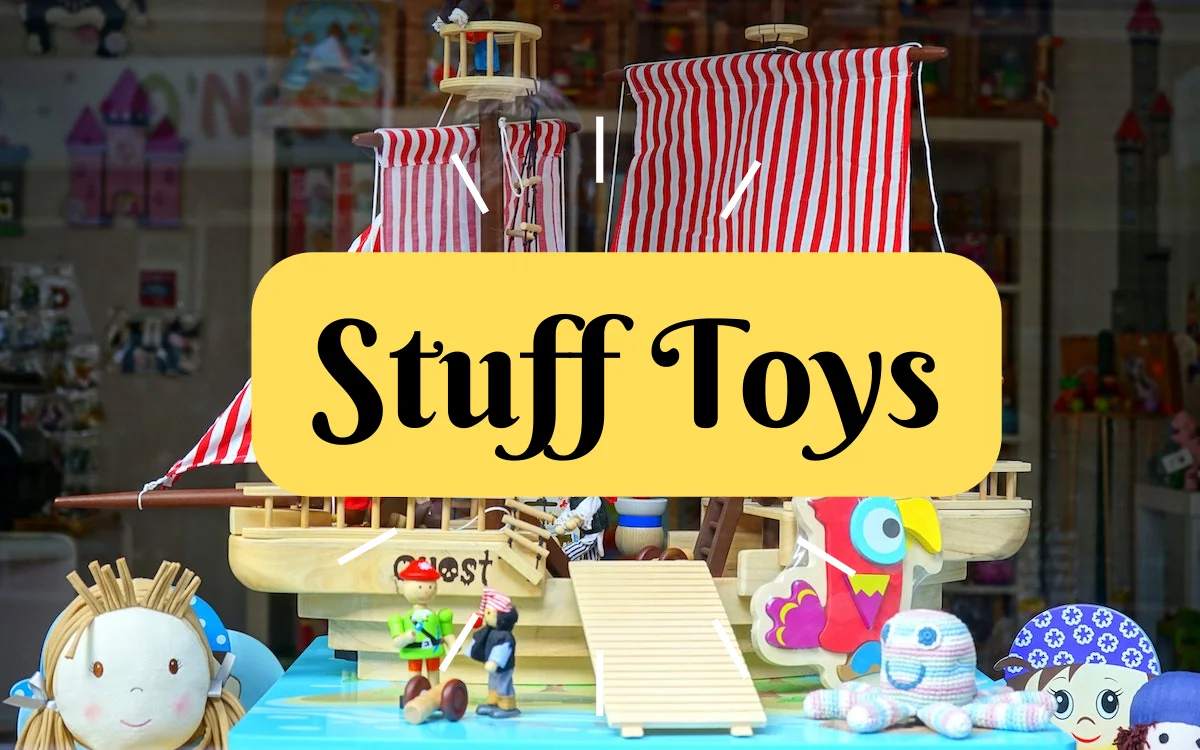Stuffed toys, often referred to as plush toys or cuddly companions, have captivated hearts for generations. These lovable creations bring joy, comfort, and even educational benefits to people of all ages. From adorable teddy bears to enchanting animals and imaginative characters, stuffed toys have a special place in our lives. In this article, we will explore the history, types, benefits, and care of stuffed toys. We will also delve into their role in pop culture, their value as collectibles, and their impact on emotional and cognitive development. So, grab your favorite plush friend and let’s dive into the world of stuffed toys!
History of Stuffed Toys
Stuffed toys have a rich history that dates back thousands of years. Ancient civilizations, such as the Egyptians and Greeks, created soft dolls and animals using various materials like fabric, straw, and even animal skins. However, it was in the 20th century that the modern concept of stuffed toys emerged. Inspired by the iconic “Teddy Bear” created in 1902, the popularity of stuffed toys skyrocketed. Today, these cuddly companions are cherished by people of all ages worldwide.
Types of Stuffed Toys
Stuffed toys come in a delightful array of shapes, sizes, and designs. From classic teddy bears to mythical creatures, there is a plush companion for every preference. Some popular types of stuffed toys include:
- Teddy Bears: These timeless classics are available in various colors, sizes, and styles. They make perfect gifts for children and collectors alike.
- Animal Plushies: From domestic pets like cats and dogs to exotic creatures like lions and elephants, animal plushies allow children to explore the animal kingdom in a huggable form.
- Cartoon Characters: Stuffed toys featuring beloved cartoon characters from movies, TV shows, and video games bring favorite fictional worlds to life.
- Fantasy Creatures: Unicorns, dragons, and mermaids take on a soft and cuddly form, sparking imaginative play and enchanting young hearts.
- Custom Plushies: Personalized stuffed toys, such as ones resembling family members or beloved pets, make for unique and sentimental gifts.
Benefits of Stuffed Toys
Stuffed toys offer more than just companionship and comfort. They also provide a range of benefits for individuals of all ages. Some notable advantages include:
- Emotional Support: Stuffed toys can be a source of emotional support, providing comfort during times of stress, anxiety, or loneliness.
- Developmental Aid: For young children, stuffed toys stimulate imagination, creativity, and role-playing, aiding in cognitive and emotional development.
- Language and Social Skills: Stuffed toys can act as conversation starters, encouraging children to express themselves and develop their language and social skills.
- Stress Relief: Squeezing or hugging a stuffed toy can provide a sense of comfort and help alleviate stress and anxiety in both children and adults.
- Sleep Companion: Many individuals find solace in cuddling a stuffed toy while sleeping, providing a sense of security and promoting a better night’s rest.
How to Choose the Perfect Stuffed Toy
When selecting a stuffed toy, there are a few factors to consider to ensure you find the perfect companion:
- Safety: Opt for toys made from high-quality materials and ensure they meet safety standards, especially for young children.
- Age Appropriateness: Consider the age of the recipient and choose a toy that suits their developmental stage and interests.
- Softness and Texture: A plush toy should be soft and huggable, with a texture that appeals to the senses.
- Size and Proportions: Decide on the desired size, keeping in mind portability and the recipient’s preferences.
- Personal Appeal: Whether it’s a favorite animal, character, or color, select a stuffed toy that resonates with the recipient’s personal tastes.
Caring for Stuffed Toys
To keep your stuffed toys in optimal condition, follow these care tips:
- Regular Cleaning: Depending on the material, gently hand-wash or machine-wash the toy using a mild detergent. Always check the care instructions beforehand.
- Spot Cleaning: Treat stains promptly by using a gentle stain remover or mild soap and water solution. Blot the stain rather than scrubbing to avoid damaging the fabric.
- Drying: Allow the toy to air dry completely, ensuring it is thoroughly dry before returning it to use. Avoid using a dryer, as high heat can cause damage.
- Brushing and Grooming: For plush toys with fur or hair, use a soft brush to maintain their appearance and remove any dirt or debris.
- Storage: Keep stuffed toys in a clean and dry environment. Avoid exposing them to direct sunlight for extended periods to prevent color fading.
Stuffed Toys in Pop Culture
Stuffed toys have left an indelible mark on popular culture. They have been featured in movies, TV shows, and literature, becoming iconic symbols. From Winnie the Pooh and Paddington Bear to the lovable characters of the Toy Story franchise, stuffed toys have captured the hearts of audiences worldwide. These endearing personalities continue to inspire imaginations and evoke nostalgia.
Stuffed Toys as Collectibles
For enthusiasts and collectors, stuffed toys hold significant value. Limited-edition releases, vintage pieces, and rare finds often become sought-after collectibles. The appeal lies not only in the sentimental attachment but also in the investment potential and the joy of curating a unique collection. From antique teddy bears to designer plushies, the world of stuffed toy collecting offers a delightful adventure for enthusiasts.
DIY Stuffed Toys
Creating your own stuffed toys can be a rewarding and creative endeavor. With various patterns, fabrics, and sewing techniques available, DIY plushies allow you to bring your imagination to life. Whether it’s sewing a traditional teddy bear or designing a whimsical creature, DIY projects provide a personal touch and the satisfaction of crafting something unique.
Stuffed Toys for Different Age Groups
Stuffed toys cater to individuals of all ages. They offer comfort, companionship, and developmental benefits across various life stages:
- Infants and Toddlers: Soft and sensory-stimulating toys with contrasting colors and different textures help stimulate cognitive and sensory development.
- Children: Stuffed toys become playmates, encouraging imaginative play, storytelling, and emotional expression.
- Teenagers and Adults: Stuffed toys can provide comfort during stressful times and act as decorative elements in living spaces, reflecting personal interests and adding a touch of whimsy.
Stuffed Toys for Educational Purposes
Stuffed toys can play a valuable role in educational settings, facilitating learning in a fun and engaging way. Some educational applications of stuffed toys include:
- Teaching Tools: Plush toys can be used as props for storytelling, introducing concepts like numbers, letters, and emotions to young children.
- Science and Nature Exploration: Stuffed animals representing different species can aid in teaching children about wildlife, habitats, and biodiversity.
- Role-Playing and Social Skills: Stuffed toys can encourage role-playing scenarios that help children develop social skills, problem-solving abilities, and empathy.
- Language Development: Using stuffed toys as characters during pretend play can enhance language skills by encouraging dialogue and storytelling.
Stuffed Toys as Comfort Objects
Stuffed toys often become cherished comfort objects, providing solace and emotional support. For children, these cuddly companions can help ease separation anxiety, provide a sense of security during bedtime, or serve as confidants when faced with challenges. Even adults may find comfort in hugging a beloved stuffed toy during times of stress or as a reminder of cherished memories.
Stuffed Toys and Emotional Development
Stuffed toys have a profound impact on emotional development. They can help children explore and express a range of emotions, develop empathy, and learn how to manage their feelings. Children often form strong emotional bonds with their stuffed toys, confiding in them and using them as sources of comfort and reassurance.
Stuffed Toys and Cognitive Development
Stuffed toys play a significant role in cognitive development by fostering creativity, imagination, and problem-solving skills. When engaging in pretend play with stuffed toys, children develop narrative skills, practice critical thinking, and learn to navigate social interactions. These activities stimulate their cognitive abilities and lay the foundation for future learning.


